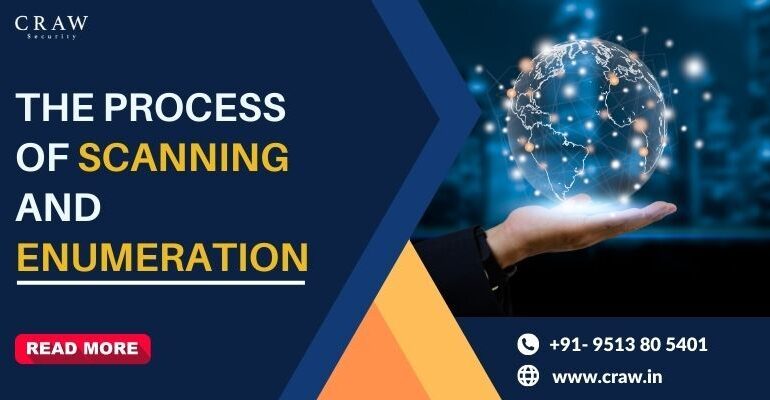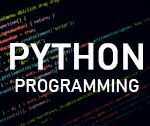The Process of Scanning and Enumeration: Unraveling the Secrets of Data Analysis

The Process of Scanning and Enumeration: Unraveling the Secrets of Data Analysis
Introduction: Scanning and Enumeration
Welcome to a thorough investigation of the Process of Scanning and Enumeration process! Scanning and enumeration are essential tools in today’s data-driven environment for finding important patterns and insights amid massive amounts of data. This article aims to guide readers through the complexities of this procedure by illuminating its different steps, tricks, and ideal methods. So grab a cup of coffee, and let’s start this fascinating data discovery voyage!
The Importance of Scanning and Enumeration
Effective data analysis is built on the principles of scanning and enumeration. They give us the ability to carefully go over databases, pinpoint crucial components, and extract valuable details. We can reveal hidden patterns, correlations, and patterns that could have remained elusive by using an organized method. This method enables organizations, investigators, and decision-makers to make well-informed decisions, improve strategies, and unearth insightful information. Let’s begin with the procedure itself now.
Process of Scanning and Enumeration
Definition and Overview
To extract pertinent data, it must be systematically reviewed and analyzed as part of the Process of Scanning and Enumeration. There are a number of phases, each of which adds to our comprehension of the dataset as a whole. Let’s go into more depth about each level.
- Data Collection
Data collection is the first phase in the scanning and enumeration process. During this phase, pertinent data is gathered from a variety of sources, including databases, questionnaires, and web scraping. At this point, assuring data accuracy and quality is essential to prevent biases or incorrect findings.
- Data Cleaning and Preprocessing
It is crucial to purify and preprocess all the information gathered before beginning the analysis. In this phase, duplicates are eliminated, missing values are handled, formats are standardized, and data is converted into a format that can be used. We set up precise evaluations by assuring consistency of information and integrity.
- Exploratory Data Analysis
In the essential phase of Exploratory Data Analysis (EDA), we find the first insights and patterns. We learn more about the properties of the information via visualizations, analytical summaries, and correlation research. EDA aids in the discovery of anomalies, correlations between variables, and interesting research fields.
- Feature Selection
Finding the most appropriate factors for evaluation is part of the choosing features process. We decrease the degree of dimensionality of the information and increase computational effectiveness by concentrating on crucial aspects. The most relevant variables are chosen using methods like analysis of correlation, mutual information, or machine learning techniques.
- Data Transformation
To satisfy the presumptions of statistical models or enhance the readability of the findings, data transformation is frequently required. To accomplish these goals, methods like the normalization process, uniformity, or exponential transformations are used. To provide the best performance during analysis, the data must be transformed.
- Statistical Analysis
The fundamental step in the scanning and enumeration process is statistical analysis. To glean useful insights from the data, it entails using a variety of statistical approaches, such as regression analysis, hypothesis testing, or clustering algorithms. Making decisions based on statistical analysis enables us to reach valid findings.
- Visualization
In order to properly communicate the outcomes of the investigation, visualization is crucial. We are able to graphically encapsulate and make understandable complex discoveries using graphs, charts, and interactive visualizations. Visualizations help stakeholders comprehend concepts better and communicate important information.
- Interpretation and Reporting
The process is completed by analyzing the data and summarizing the findings. In order to draw applicable conclusions from the study, this stage calls for analytical proficiency and subject-matter expertise. Reporting that is clear and succinct makes certain that the insights are comprehended and may be used to inspire wise decision-making.
FAQs
About The Process of Scanning and Enumeration
1: Why is data cleaning important in the scanning and enumeration process?
The scanning and enumeration process depends heavily on data cleaning, also referred to as data scrubbing or data sanitization, for a number of reasons, such as the following:
- Accurate Results,
- Efficient Resource Utilization,
- Improved Vulnerability Identification,
- Enhanced Data Analysis,
- Compliance Requirements,
- Minimized False Positives, etc.
2: What are some common challenges in the scanning and enumeration process?
Some of the common challenges in the scanning and enumeration process are as follows:
- Network Complexity,
- Firewall Restrictions,
- Resource Limitations,
- False Positives and False Negatives,
- Hidden or Misconfigured Systems,
- Timing and Synchronization,
- Access and Authorization,
- Compliance and Legal Considerations,
- Evolving Network and System Changes, etc.
3: What role does feature selection play in the scanning and enumeration process?
The process of selecting pertinent and useful features or qualities to be investigated or evaluated during the scanning and enumeration process is referred to as picking features in the setting of scanning and enumeration. In order to maximize the scanning and enumeration activities’ productivity, precision, and effectiveness, feature selection is a critical step.
4: How can visualization techniques enhance the scanning and enumeration process?
By giving a visual depiction of the data, network, or system being scanned, visualization techniques can dramatically improve the scanning and enumeration process. The following are a few advantages of using visualization techniques:
- Network Mapping,
- Asset Identification,
- Real-Time Monitoring,
- Vulnerability Visualization,
- Relationship Analysis,
- Historical Analysis,
- Reporting and Communication, etc.
5: Are there any specific software or tools recommended for the scanning and enumeration process?
Yes, there are several software and tools available that are commonly used for the scanning and enumeration process, such as the following.
- Nmap,
- Nessus,
- OpenVAS (Open Vulnerability Assessment System),
- Nikto,
- Burp Suite,
- Wireshark,
- Metasploit Framework,
- Retina Network Security Scanner, and many more.
6: How can the scanning and enumeration process benefit businesses and organizations?
There are various ways by which scanning and enumeration process benefit businesses and organizations, like the following:
- Vulnerability Identification,
- Risk Mitigation,
- Compliance and Regulatory Requirements,
- Protection of Confidential Data,
- Network and Asset Visibility,
- Incident Response and Forensics,
- Proactive Security Measures,
- Reputation and Customer Trust, etc.
Conclusion
In a nutshell, data analysis must include the processes of scanning and enumeration. We can uncover the mysteries held within datasets by adopting a methodical strategy that encompasses data collection, cleaning, exploratory analysis, feature selection, statistical analysis, visualization, and interpretation. Decision-makers, researchers, and enterprises can make wise decisions and achieve success with the help of the insights gleaned from this approach. Hence, in order to succeed in your data analysis projects, harness the strength of scanning and enumeration and allow the data to lead the way.
Moreover, if you wish to go further in this trajectory, then you may join a fully-fledged 1 Year Diploma in Cyber Security by Craw Security, the Best Cybersecurity Training Institute in India that offers world-class fundamentals of cyber security through the most advanced and experienced training professionals with 12+ years of quality experience.















